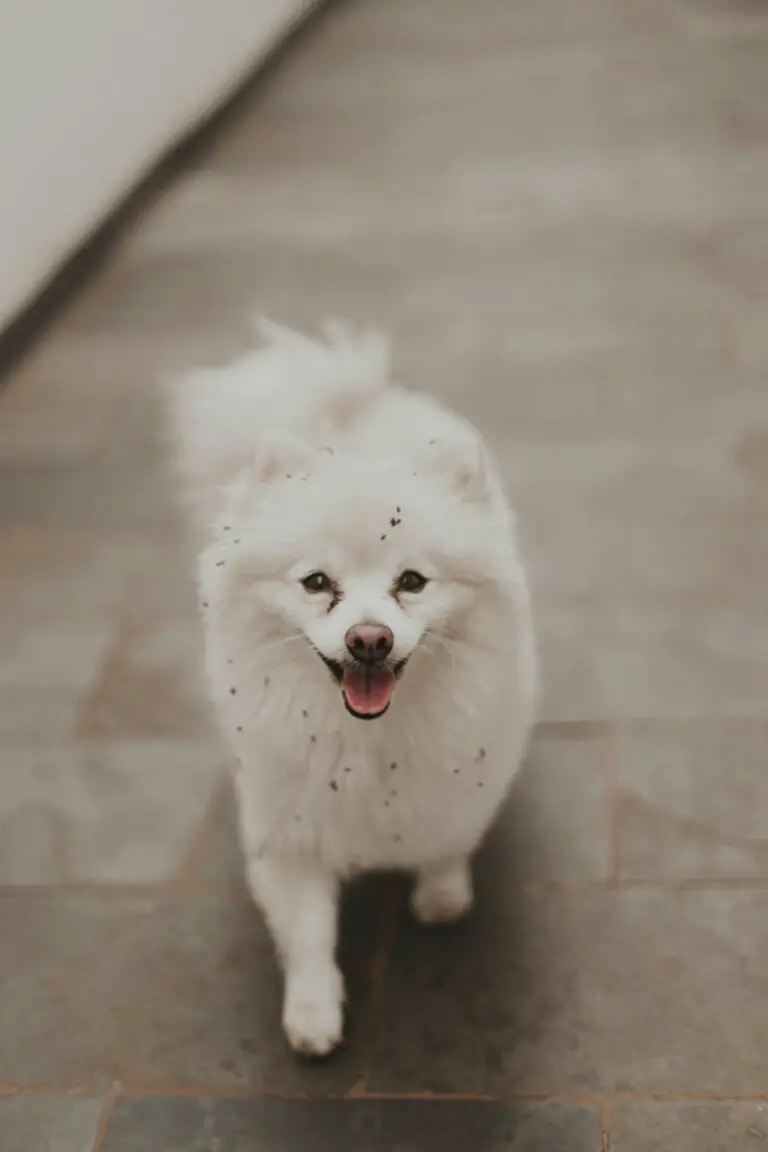Retrievers are very popular around the world, especially in countries like England, Canada, and the United States. They are recognized for their sweet temperament, energetic personality, and their historical performance as retrievers when hunting birds and other prey.
Although the Golden Retriever and Labrador Retriever breeds are the best known within this group, the truth is that there are 6 types of retrievers. These dogs are often similar in temperament and appearance, but they also exhibit some differences.
Table of Contents
What are the different types of retrievers?
The International Cynological Federation and other official clubs such as the AKC (American Kennel Club) and the UKC (United Kennel Club) recognize 6 types of retrievers in total. They are:
- Golden retriever or golden retriever
- Labrador retriever
- Chesapeake Bay Retriever or Chesapeake Retriever
- Flat-coated retriever or smooth-haired retriever
- Curl-coated retriever or curly-haired retriever
- Nova Scotia Duck Tolling Retriever or Nova Scotia retriever
What is it that characterizes each of them? What makes each type of retriever unique?
1. Golden retriever
The golden retriever was first bred in Scotland in the mid-19th century. It is said that the creator of the breed, a member of the nobility known as Lord Tweedmouth, wanted a dog that would be excellent as a retriever and would also adapt well to the Scottish climate.
The cross between a yellow retriever dog and breeds such as the tweed water spaniel, the Irish setter, and the Saint Hubert dog gave rise to the modern Golden Retriever. The result was not only a dog of great beauty but an excellent companion as a hunter and worker.
The golden retriever is a medium-sized, robust and muscular dog. Its broad head, short ears, straight muzzle, and long, dense coat of bright gold color are the distinguishing attributes of this breed.
- Origin: United Kingdom
- Size: medium to large
- Breed type: pure
- Life expectancy: 10-12 years
- Temperament: Confident, Friendly, Intelligent, Kind, Devoted.
- Height in males: 56-61 cm, height in females: 51-56 cm
- Weight in males: 27-36 kg, weight in females: 25-32 kg
- Colors: dark gold, light gold
- Hypoallergenic: No
- Litter size: 5-10 puppies
Golden Retrievers are often used successfully as guide dogs for blind people.
See: How Many Types of Golden Retrievers Are There? 3 Varieties + Images
2. Labrador Retriever
Apparently, this type of retriever did not originate in the Labrador region of northern Canada, but on the island of Newfoundland. The island’s fishermen are said to have used robust, water-loving dogs to haul nets and retrieve fish.
Later, the old Labrador retriever, known as “St. John’s dog”, became an excellent hunting companion thanks to its great retrieval ability. Once he was brought to England, he also became popular as a sporting dog.
The Labrador Retriever is a versatile retriever with a gentle and personable nature. His intelligence has led him to fill many roles, not only as a hunting dog, but also as a guide, therapy, search and rescue, and narcotics detection dog.
It is distinguished by its short, dense coat, as well as its thick, tapered tail.
- Origin: Canada, United States
- Size: medium to large
- Breed type: pure
- Life expectancy: 10-12 years
- Temperament: affectionate, alert, cheerful, energetic, friendly, intelligent, loyal, sensitive
- Height in males: 56-61 cm, height in females: 53-58 cm
- Weight in males: 27-34 kg, weight in females: 25-32 kg
- Colors: black, chocolate, yellow
- Hypoallergenic: No
- Litter size: 5-10 puppies
The Labrador Retriever has everything that attracts the vast majority. Gentle manners, adaptability, great intelligence… for many he is the ideal dog.
Recommended: What are the Types of Labrador? Characteristics and Differences + Photos
3. Chesapeake Retriever
Also known as “Chessie”, the Chesapeake Bay retriever owes its name and its origin to a shipwreck that occurred off the coast of Maryland, United States. It is said that his ancestors were two retriever puppies rescued from a shipwrecked ship.
Both dogs, of the old Labrador type, were not crossed with each other, but with other breeds common in the area. Sometime later this intelligent retriever was obtained, with a powerful body and sensitive temperament, whose thick and oily double coat allowed him to retrieve ducks in the cold waters of the bay.
The Chesapeake Retriever is the largest and hardiest of all retriever types. Its amber-colored eyes and its dense, wavy, waterproof fur are considered its most remarkable physical attributes.
- Origin: United States
- Size: large
- Breed type: pure
- Life expectancy: 10-13 years
- Temperament: cheerful, affectionate, intelligent, sensitive, protective, calm
- Height in males: 58-66 cm, height in females: 53-61 cm
- Weight in males: 29-36 kg, weight in females: 25-32 kg
- Colors: dark or light brown, dark or light dead grass, rush color (golden red)
- Hypoallergenic: No
- Litter size: 7-9 puppies
In 2019, a Chesapeake retriever made history by becoming the first all-breed retriever to earn both the AKC titles of “Master Hunter” and “All Breed Best in Show.
4. Flat-Coated Retriever
This type of retriever is said to be descended from a Newfoundland mix that was later crossed with other breeds, including setters, herding dogs, and water spaniels. Before being dethroned by his Golden and Labrador retriever relatives, this was Britain’s foremost retriever.
They are described by many as the slimmest and most graceful of all retrievers. It has an elongated snout and shiny smooth fur, with feathers on its legs and tail.
A curious fact about the Flat-Coated Retriever is that it takes 3 to 5 years to reach maturity. It usually shows puppy behavior and gives the impression that it does not grow. This is why in some regions it is known as the “Peter Pan” of retrievers.
- Origin: United Kingdom
- Size: medium to large
- Breed type: pure
- Life expectancy: 10-13 years
- Temperament: Friendly, Confident, Devoted, Optimistic, Intelligent
- Average height: 56-58 cm
- Weight in males: 29-38 kg, weight in females: 25-31 kg
- Colors: black, liver (brown-greyish-reddish)
- Hypoallergenic : No
- Litter size: 4-8 puppies
As an adult, the Flat-Coated Retriever can make a good watchdog, but be warned that this was not the breed’s historical purpose. In general, he is inclined to be friendly with everyone.
5. Curly-Coated Retriever
The curly-coated retriever is described as one of the earliest retrievers. It is apparently a descendant of the English water spaniel, the ancient Newfoundland retriever, the retriever setter, and the poodle.
Its unique appearance and distinguished bearing made the curlie a popular dog at the first dog shows in England, back in 1860.
See below: 5 Types of Poodle – Standard, Medium, Miniature, Toy, Teacup + Colors
He is a handsome retriever with a dense curly coat that is well defined and resistant to water. It is considered the most independent type of retriever; He can sometimes seem a bit distant, but as a faithful representative of his lineage, he is always willing to please.
Origin: United Kingdom
Size: large
Breed type: pure
Life expectancy: 8-12 years
Temperament: intelligent, cunning, independent, proud, confident
Average height: 63-69 cm
Average weight: 29-36 kg
Colors: black, liver
Hypoallergenic : No
Litter size: 6-8 puppies
The Curly-Coated Retriever can sometimes appear aloof, less demonstrative, and even a bit stubborn. This is particularly true when interacting with strangers.
6. Nova Scotia Retriever
As its name suggests, this type of retriever was developed in Nova Scotia in the early 19th century. It was bred with the aim of obtaining a dog with a curious nature and fast movements, capable of attracting waterfowl through play to turn them into prey.
The “toll” technique, inspired by the fox hunting style, is one of the most distinctive features of this retriever.
The Nova Scotia Retriever is the smallest of the 6 types. It is a beautiful and compact dog, whose golden-copper double coat exhibits white spots on the chest, face, and legs. Kindness, agility, and intelligence are some of the traits that define his personality.
Origin: Canada
Size: medium
Breed type: pure
Life expectancy: 12-14 years
Temperament: affectionate, alert, courageous, energetic, kind, playful, sensitive
Average height : 43-53 cm
Average weight : 17-23 kg
Colors: red-gold, red-copper, or other shades of red
Hypoallergenic : No
Litter size: 6-10 puppies
Many Nova Scotia retrievers have a slightly sad or worried expression while they are not working. But at the slightest signal, they respond with an expression of intense concentration and excitement to attract prey and assist their owners.
What does it mean for a dog to be a retriever?
Retriever dog breeds have a fairly similar story. Retriever is the term in English to refer to hunting dogs that were dedicated to retrieving prey, hence they are known as “collectors”.
Typically, the dog was supposed to find the prey and bring it back to the hunter without causing any harm.
Such work required, first of all, that the dog had a soft mouth, and in addition, sufficient strength and agility to traverse rough terrain or work in water. Likewise, he had to be intelligent and show great willingness to please and obey.
The development of different breeds of retrievers over the years gave rise to the retrievers of today. They are all dogs of good temperament, alert attitude, great intelligence, and willingness to please their owner.
How are a Golden Retriever and a Labrador different?
The Golden Retriever and the Labrador Retriever are very similar dogs, but there are several ways they differ. Here the origin and purpose of the breed are highlighted, as well as some physical traits, for example, the color and length of its coat.
Purpose
Golden retrievers were selectively bred in Scotland to hunt wildfowl, as then-existing retrievers were not suited to retrieving prey on the ground. For their part, farmers were developed on the island of Newfoundland to retrieve ducks and fish that escaped from fishing nets.
Size / Appearance
They are very similar in size. Both types of retrievers are classified as medium dogs. However, the Golden Retriever is considered a more elegant-looking dog due to being slightly slimmer than the Labrador Retriever. The latter looks a bit more robust.
Cloak length
The golden retriever breed is characterized by long, wavy fur, especially around the neck, the backs of the legs, and the underside of the tail. However, the Labrador is a dog with a short, dense and straight coat, which is necessary to work in the water.
Layer color
A golden retriever’s coat can be either dark gold or light gold in color, while the Labrador retriever can exhibit 3 colors: black, yellow, or chocolate.
Eye color
The golden retriever has dark brown eyes, while the Labrador’s can be brown, gold, or honey.
Power level
Golden Retrievers like to exercise, explore, frolic, and play, but they also enjoy sleeping or resting sessions. For their part, Labradors tend to be a bit more energetic and boisterous. They need more exercise compared to their close cousin.
Temperament
Being retriever-type dogs, they both exhibit a friendly, intelligent, obedient, affectionate, and sociable temperament. Still, the Golden Retriever is described as friendly, intelligent, and devoted, and the Labrador is friendly, active, and outgoing.
Final thought
We hope that the content has served to clarify your doubts about the types of retrievers and their main differences. We invite you to continue reading other posts about the types and varieties of some of the most popular dog breeds.
References:
- https://www.akc.org/expert-advice/lifestyle/the-retrievers-ever-talented-and-willing-to-please/
- http://www.fci.be/en/nomenclature/races.aspx?search=retriever
- https://www.ukcdogs.com/hunting-retrievers
- https://www.akc.org/dog-breeds/golden-retriever/
- http://www.fci.be/en/nomenclature/COBRADOR-DORADO-111.html
- https://www.akc.org/dog-breeds/labrador-retriever/
- https://www.akc.org/dog-breeds/chesapeake-bay-retriever/
- http://www.fci.be/en/nomenclature/CHESAPEAKE-BAY-RETRIEVER-263.html
- https://www.akc.org/dog-breeds/flat-coated-retriever/
- https://www.akc.org/dog-breeds/curly-coated-retriever/
- http://www.fci.be/en/nomenclature/CURLY-HAIRED-COBRADOR-110.html
- https://www.akc.org/dog-breeds/nova-scotia-duck-tolling-retriever/
- http://www.fci.be/en/nomenclature/NUEVA-ESCOCIA-COBRADOR-DOG-312.html
- https://www.akc.org/sports/retrievers/



